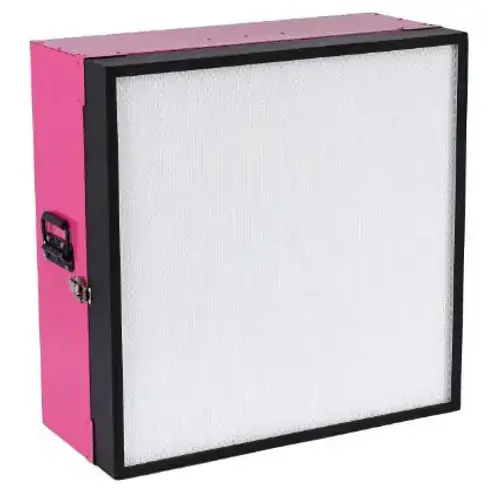Exploring the Essential Role of a Laminar Flow Hood in Mycology
- Colorado CulturesLLC
- Jan 17
- 4 min read
Updated: Jan 29
In the world of mycology, ensuring a sterile and controlled environment is crucial for the success of any grow. One of the most effective tools for achieving this is the laminar flow hood. This blog will delve into what a laminar flow hood is, its importance in cultivation, and how it can help maximize your yields.

What is a Laminar Flow Hood?
A laminar flow hood is a sophisticated piece of equipment designed to create a sterile workspace. It utilizes HEPA filters that effectively remove airborne contaminants, ensuring that your cultivation process remains as clean as possible. Unlike other systems that might recirculate air or disrupt laminar flow, this focused airflow keeps your work area free from harmful particles. But what exactly does that mean for you as a mycologist?
In simple terms, the laminar flow hood operates by circulating air in a unidirectional pattern, pushing it through filters that trap even the smallest of contaminants. This method is pivotal, especially during inoculation or doing isolations, where even the slightest presence of pathogens can hinder growth. Understanding these mechanics can help you appreciate the critical role the laminar flow hood plays in cultivating not just mushrooms but to overall success in mycology.
Moreover, many mycologists find that setting up their laminar flow hood isn't just about turning it on. They often engage in pre-usage rituals, like cleaning the surface and ensuring the equipment is functioning correctly. The clarity in functionality and purpose not only boosts their confidence but fosters a routine that enhances discipline in their mycology techniques.
The Importance of Sterility in Cultivation
In mushroom cultivation, keeping a sterile environment is absolutely essential to fend off competing contaminations. Even the tiniest mistake, like inadequate cleaning or letting your area get exposed to contaminants, can lead to bacterial growth that wreaks havoc. For dedicated growers who truly care about their harvests, grasping the importance of sterility isn’t just a detail—it’s a game changer. By creating a clean space, you're not only protecting your fungi but also paving the way for a bountiful yield. The stakes are high, and understanding why sterility matters can be the difference between a full canopy and a complete loss. Embracing this knowledge will not only enhance your growing practices but also instill the confidence needed to ensure your mushrooms thrive.
By creating a barrier against contaminating particles, laminar flow hoods assure growers that they are setting up their grows for success. They not only safeguard against competing contaminations during the inoculation process but also give peace of mind. The investment in a laminar flow hood can seem less daunting and more like a necessity.
How to Properly Use a Laminar Flow Hood
Using a laminar flow hood may seem straightforward, but there are best practices to follow to ensure maximum effectiveness. First and foremost, proper setup is essential—ensuring that your hood is placed in a location free from external contamination sources. Remember, cleanliness is key, so a clean area around the flow hood can greatly enhance its efficacy.
This section will discuss the setup, maintenance, and operating procedures to get the most out of your laminar flow hood. Regular maintenance, such as changing the HEPA filters and wiping surfaces, cannot be overlooked. With diligent care, your laminar flow hood can last for many years. Proper usage doesn't stop with setup; it extends to how you conduct your activities in front of the flow hood.
Using gloves and sterile instruments during your operations can help maintain the integrity of the environment you worked hard to create with the hood. Additionally, taking a moment to allow the airflow to stabilize before starting work ensures that you are using the hood to its full potential. It's good practice to allow the flow hood to run for at least 30 minutes before working in front of it, if the flow hood as been shut off. It's these small, intentional actions that will yield the best results in your mycology efforts.
Choosing the Right Laminar Flow Hood for Your Needs
With so many options available, selecting the right laminar flow hood can be daunting. You might find yourself overwhelmed by specifications, sizes, and features. This part will provide key considerations, such as size, airflow type, and budget to help you make an informed decision. It’s crucial to evaluate your space and understand what you specifically aim to achieve.
Consideration of your working area can significantly dictate which laminar flow hood suits you best. For a larger commercial space, a bigger hood with higher airflow rates might be necessary. However, home growers with limited space might find a more compact 2'x2' model fits their setup perfectly. Tailoring your choice to your environment can increase the efficiency of your laminar flow hood.
Lastly, never underestimate the importance of reviews and recommendations from fellow mycologist. They can offer insights into what works best in real-world situations, helping you avoid pitfalls in your purchasing decision. Investing time in understanding your needs and comparing available options will undoubtedly lead you to the ideal laminar flow hood that will support your cultivation journey.
The Takeaway on Laminar Flow Hoods
Using a laminar flow hood can significantly enhance your mycology efforts by providing a clean and sterile environment in a commercial setting or home lab. Remember, the key to successful growth is not just in the seeds you plant but also in the environment you create for them. Embracing the technology of laminar flow hoods can set the foundation for a successful mycology journey.

Comments